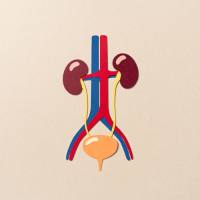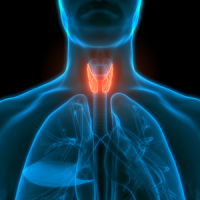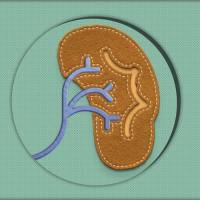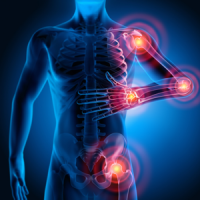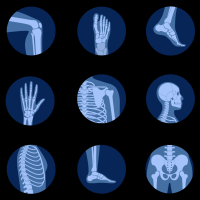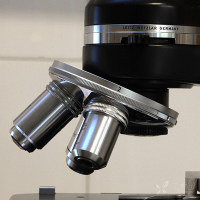【翻译】Peripheral Arterioportal Fistula造影增强超声检查演示周围性动脉门静脉瘘
Peripheral Arterioportal Fistula
Demonstration With Contrast-Enhanced
Sonography
Abbreviations
CES, contrast-enhanced sonography; CT, computed
tomographic; HCC, hepatocellular carcinoma
Case Report
A 79-year-old man underwent percutaneous ethanol injection therapy because of a subcapsular 21-mm round HCC nodule. No tumor biopsy had been performed, and HCC diagnosis was based on typical sonographic and computed tomographic (CT) findings combined with an increased @-fetoprotein serum level (211 ng/mL). The patient had undergone ethanol injectiontherapy of a biopsy-proved left liver lobe HCC 2 yearsearlier.
As done routinely in our institution, the patient underwentCES liver imaging 7 days after treatment to assesscompleteness of necrosis and rule out complications.Baseline (conventional) sonography showed a slightly
inhomogeneous, hypoechoic nodule without any other parenchymal change. No color Doppler assessment of region of interest vascularity was attempted. Contrast enhanced sonography showed homogeneous and complete hypoechogenicity (hypovascularity) of the ablated nodule through all opacification phases, indicating complete necrosis; nevertheless, an unusual additional finding was noted around the ablated tumor. Perinodular parenchyma showed intense hyperechogenicity (hypervascularity) during the arterial phase of contrast enhancement, becoming subsequently isoechoic to remaining parenchyma all through the portal and sinusoidal phases of liver opacification (Figure 1). Moreover, small opacified portal veins were visible within this hyperechoic area and toward the right-side portal branches (Figure 2). Based on our knowledge of the known CT appearance of an arterioportal fistula,6–9 the diagnosis of iatrogenic formation of a fistula between peritumoral arteries and veins was hypothesized. The patient underwent helical CT imaging with confirmation of CES findings (Figure 3) and was treated conservatively. His recovery was uneventful, and there was no evidence of local recurrence 6months later.
Discussion
In CT literature, the term “transient hepatic attenuation difference” refers to a hyperattenuating area that is seen within liver parenchyma during arterial-phase scans and is not recognizable on portal and delayed scans.7 This perfusion phenomenon can be identified around liver tumors as well as not related to liver tumors. Transient hyperattenuation indicates vascular changes as a consequence of reactive hyperemia (inflammation), peritumoral area hypervascularization (socalled tumor suction effect), compensatory arterial overflow (portal venous thrombosis), or abnormal arteriovenous communication.7–9 Dynamic CT and magnetic resonance imaging allow an accurate demonstration and understanding of these functional changes.6–10
By using CES, we could show a peripheral hepatic arterioportal fistula by recognizing the related indirect perfusion changes. Sonographic techniques, for example, color Doppler imaging, can show a central (parahilar) arterioportal fistula11,12 but are clearly unable to directly or indirectly show small peripheral communications between arterial and portal branches.
Contrast-enhanced sonography allows optimal assessment of all post ablation changes,1 and CES findings reflect the well-known CT results.6,13 Necrotic HCC appears as a hypoechoic lesion through all phases of liver enhancement. The necrotic area is homogeneous, well delimitated, and surrounded by normal parenchyma. Lesion conspicuity increases while passing from the arterial to the portal phase. Residual tumor tissue usually appears as an eccentric area of persistent hypervascularization during the arterial phase of enhancement. During the first weeks after ablation, it may be possible to recognize a thin circumferential rim of perinodular opacification due to granulation tissue and a slightly increased enhancement of peritumoral parenchyma due to reactive hyperemia.
Computed tomographic studies have shown transient hepatic attenuation differences in up to 21% of patients who have undergone HCC percutaneous ablation.6 Arteriovenous fistulas have been reported in up to 6% of these patients.6 In our patient, the posttreatment hypervascularity around the necrotic HCC was clearly due to an arterioportal fistula. In fact, demonstration of early portal branch enhancement strictly indicates that parenchymal hyperattenuation and hyperechogenicity are due to fistula formation and not other causes.6–9 Postablation reactive hyperemia may have caused an increased arterial-phase enhancement but not an arterial-phase opacification of portal branches.
Fistulization between intrahepatic arterial and portal vessels may be due to several causes,including congenital abnormalities, trauma, cirrhosis, liver tumors, percutaneous diagnostic or therapeutic procedures, and transcatheter intraarterial chemoembolization.11,12,14,15 Proper recognition of an arterioportal fistula is relevant for 2 reasons. First, peritumoral hyperechogenicity at CT or CES imaging may be misinterpreted as a perifocal recurrence of the ablated tumor because the landmark of HCC is that of hypervascularized tissue during the arterial phase of enhancement.1–5 Second, large high-flow proximal fistulas may need therapeutic embolization. 15 With the use of CES liver imaging becoming more widespread, it is predicted that “transient hepatic echogenicity differences” of different hemodynamic origins will be identified with increasing frequency.
中文译文
造影增强超声检查演示周围性动脉门静脉瘘
造影增强超声检查(CES)在经皮消融治疗后肝局灶性病损评估应用越来越频繁。我们报道一例经皮无水乙醇注射治疗肝细胞性肝癌后用CES显示病灶周围的动脉门静脉瘘。诊断的线索包括在动脉相增强相肝实质结节周边的一过性高回声和靠近被治疗结节的门静脉分支的早期显影。瘘管的形成可能与新近注射过无水乙醇有关。就我们所知,以前还没有关于周围性动脉门静脉瘘的CES特征报道。
病例报告:
一例79岁老年男性病人,因发现肝被膜下直径21mm的肝细胞癌结节而给予经皮无水乙醇注射治疗。本例未经病理组织学检查证实,而是根据特征性的超声和CT表现和血浆甲胎蛋白的升高(211 ng/mL)作出诊断的。该患者两年前因活组织检查证实肝左叶HCC曾予以无水乙醇注射治疗。
病人在经无水乙醇注射化学消融治疗后7天常规给予CES肝显像检查以评价病灶的坏死程度并排除并发症。普通(常规)超声显示轻微的不均匀的低回声结节影而肝实质里无任何改变。彩色多普勒也未见该区域多血管状态。而CES显示在显影的整个过程中,被消融治疗后的结节为均质完全低回声性(低血管状态)的,提示完全坏死,然而,在肿瘤周边却有异常发现。在造影增强的动脉相,肝结节周围显示致密强回声性(提示多血管状态),而在肝显影的门静脉期和血窦期逐渐变成与其余的肝实质等回声(见图1)。此外,在这个高回声增强区里可以看到小的显影门静脉并通向右侧门静脉分支(见图2)。根据我们对动脉门静脉漏的CT表现所知,可以猜测肿瘤周边的动静脉瘘是由于医生的治疗所致。该患者经螺旋CT检查进一步证实CES所见(见图3),并采取保守治疗,恢复顺利,6月后检查也未发现局灶复发。
讨论:
在CT学术名词中,“一过性肝脏密度差异”指得是在动脉相扫描肝实质表现为密度高衰减性区域,而在静脉相和延迟扫描则不能辨别。这种灌注现象在肝脏肿瘤和一些非肝脏肿瘤中均可见到。一过性密度高衰减表明血管在变化,例如反应性充血(炎症),肿瘤周边的血管过度形成(也叫肿瘤吸引效应),代偿性动脉溢流(如门静脉血栓形成),和动静脉交通畸形。动态CT和核磁共振成像能精确说明和了解这些功能变化。
用造影增强超声检查方法,通过识别相关的间接灌注改变就能发现肝脏周边的动脉门静脉瘘。超声技术,如彩色多普勒成像,能够显示中央性(副肝门区)的动脉门静脉瘘,但很明显,对小的周边性动脉与门静脉分支的交通则不能直接或间接显示。
造影增强超声检查是最适合评价经皮消融术后肝脏病灶的改变,而且其结果也反应了CT的结果。坏死的肝细胞癌在增强检查的各个时期均表现为低回声灶。坏死区是均匀的,边界清楚的,被正常肝实质包绕。当造影剂从动脉到门静脉使,瘘管显示明显增强。而残留的肿瘤组织在动脉相增强时通常表现为持续多血管的偏心区。在消融术后一周内,由于肉芽组织而看到结节周围的细晕环影或由于反应性充血而看到肿块周边的轻微增强影。
超过21%的经皮消融手术病人在CT中能显示一过性肝脏密度差异。据报道,这些病人中6%有动静脉瘘。在我们这例病人中,消融术后治疗出现坏死肝细胞癌周边血管过度形成很明显是由于动脉门静脉瘘所致。实际上,早期门静脉增强实证确实表明肝实质的高衰减和高回声是由于瘘管的形成缘故而非其他原因。消融术后反应性充血可以使动脉相增强但不能显示动脉相中的门静脉分支。
在这个病例中,动脉门静脉瘘很可能是由医生的治疗引起的,因为它与无水酒精注射治疗过程的暂时相关的。并且在超声检测到结节前10天,CT检查并没有发现病灶周围任何血管畸形。事实上,经皮穿刺,如活检和消融治疗,若不慎刺破肿瘤周边血管,均可导致周边性动脉门静脉瘘。
肝内动脉和门静脉瘘管形成可有以下几种原因,如先天性畸形,创伤,肝硬化,肝肿瘤,经皮肝穿刺诊断或治疗操作以及经导管动脉内化疗栓塞。正确认识肝动脉门静脉瘘的相关原因有二。首先,在CES或CT成像中肿瘤周边的高回声可能被误认为被消融肿瘤病灶周边复发,因为肝细胞性肝癌边界在动脉相增强时为多血管性组织。其次,近端的太高流量的瘘管可能需要栓塞治疗。随着CES肝成像的应用越来越广泛,可以预测“一过性肝脏回声差异”中的不同血流动力学起因也将逐渐被识别。







